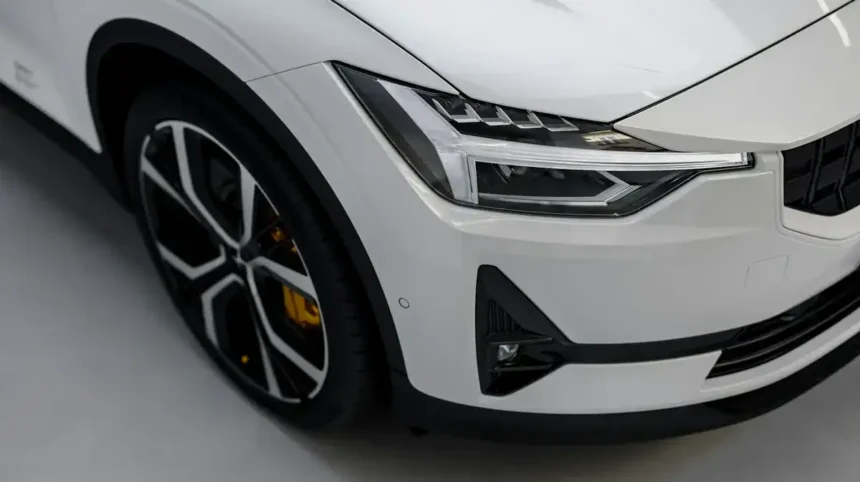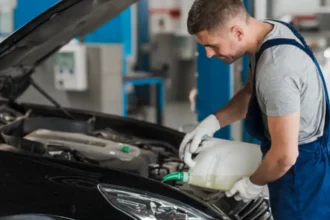Your car’s exhaust system plays a crucial role in the overall performance of your vehicle, affecting everything from engine efficiency to emissions control. Regular inspection of the exhaust system can help prevent costly repairs, improve fuel efficiency, and ensure your car is running cleanly and quietly. Knowing how to inspect it properly will keep your car performing well while also complying with emissions regulations.
In this guide, we’ll cover all the essential steps to inspect your car’s exhaust system, common signs of trouble, and how regular car maintenance can keep your exhaust in top shape.
The Importance of Your Car’s Exhaust System
The exhaust system is responsible for removing harmful gases produced by the engine, reducing noise, and improving fuel efficiency. It ensures that emissions are filtered and expelled safely, making it a critical component for both the car’s performance and the environment. A well-maintained exhaust system can improve your vehicle’s longevity, save fuel, and reduce harmful emissions.
Signs That Your Exhaust System Needs Inspection

Before diving into the inspection process, it’s important to recognize the signs that indicate potential issues. Here are common symptoms that may suggest problems with your exhaust system:
- Excessive Noise: A loud, rumbling noise is often the first sign of an exhaust leak. This could mean a hole or crack in the exhaust pipe or muffler.
- Decreased Fuel Efficiency: If your car is using more fuel than usual, it could be due to an exhaust system problem affecting the engine’s performance.
- Vibrations: Unusual vibrations from the steering wheel or gas pedal could indicate an exhaust system problem.
- Visible Rust or Corrosion: Rust or holes in the exhaust components can compromise the system’s effectiveness and pose safety risks.
- Check Engine Light: A malfunctioning exhaust system can trigger the check engine light, particularly if there’s a problem with the catalytic converter.
Step-by-Step Guide to Inspect Your Exhaust System
1. Visual Inspection of the Exhaust System
Begin your inspection with a visual check. You’ll want to examine the following parts of the exhaust system:
- Exhaust Manifold: This part collects exhaust gases from the engine’s cylinders and directs them to the exhaust pipe. Check for cracks, leaks, or rust.
- Exhaust Pipes: Inspect the pipes that run from the manifold to the muffler for signs of rust, holes, or damage.
- Muffler: The muffler reduces the noise created by the exhaust system. Look for holes, rust, or signs of wear.
- Catalytic Converter: This component converts harmful emissions into less harmful gases. Make sure it’s intact and free from damage.
What to Look For:
- Holes, cracks, or rust on the pipes, muffler, or catalytic converter.
- Loose or hanging components.
- Black soot or oily residue, which can indicate leaks.
Pro Tip: Use a flashlight to get a clearer view of hard-to-see areas under your car.
2. Listen for Unusual Sounds
One of the easiest ways to detect an exhaust system issue is by listening. Turn on your engine and listen for any unusual sounds such as:
- Loud Rumbles: A deep rumbling sound may indicate a hole in the muffler.
- Hissing or Tapping: These sounds suggest a crack or hole in the exhaust pipe or manifold.
- Rattling: Loose components or a failing catalytic converter can cause rattling noises.
3. Check for Leaks
Leaks in the exhaust system are dangerous because they can allow harmful gases, such as carbon monoxide, to enter the cabin. Here’s how to inspect for leaks:
- Start with a Cold Engine: Begin your inspection when the engine is cold to avoid burns.
- Look for Smoke: If you notice visible smoke from the exhaust system (other than normal exhaust gases), this could indicate a leak.
- Feel for Air Leaks: With the engine running, carefully place your hand near (but not touching) the exhaust pipes to feel for escaping air. If you feel any air in areas where there shouldn’t be any, you likely have a leak.
Safety Note: Be careful not to touch hot parts of the exhaust system, especially after the engine has been running for some time.
4. Inspect for Rust and Corrosion
Rust is one of the most common issues in the exhaust system, especially in areas that experience a lot of moisture, road salt, or extreme temperatures. Rust weakens the exhaust pipes and can cause holes or cracks.
- Check the Pipes: Look for rust, especially near the muffler and catalytic converter.
- Inspect the Clamps and Mounts: The brackets holding the exhaust system in place can also rust over time. Make sure these components are secure.
5. Monitor Your Car’s Performance
A failing exhaust system can impact your car’s performance. Keep an eye on the following:
- Decreased Acceleration: If your car struggles to accelerate, it may be due to a clogged catalytic converter or exhaust system obstruction.
- Poor Fuel Economy: A damaged exhaust system can make your engine work harder, reducing fuel efficiency.
- Exhaust Smell in Cabin: If you detect a strong exhaust smell inside the car, you likely have a serious leak in the system, which needs immediate attention.
Common Exhaust System Issues and Their Signs
| Problem | Symptoms | Recommended Action |
|---|---|---|
| Leaks or Cracks | Loud noises, reduced engine performance | Patch or replace damaged sections |
| Rust and Corrosion | Visible rust, weakened pipes or muffler | Replace rusted components |
| Loose Components | Rattling sounds, loose exhaust mounts | Tighten or replace loose parts |
| Faulty Catalytic Converter | Rattling, reduced acceleration, check engine light | Replace catalytic converter |
| Exhaust Smell in Cabin | Fumes inside the car, potential health hazard | Inspect and repair leaks immediately |
Conclusion
Regularly inspecting your car’s exhaust system is key to maintaining the overall health and safety of your vehicle. By catching issues early, you can avoid more serious problems and costly repairs. Simple checks for leaks, rust, and performance changes will help ensure your exhaust system is working efficiently, keeping your car running smoothly and safely.
Whether you’re a DIY car enthusiast or just looking to maintain your car’s health, taking time to inspect your exhaust system is one of the smartest maintenance tasks you can perform.








